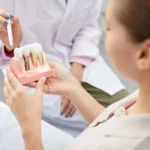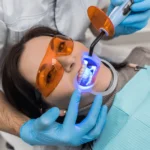Welcome to our Beginner’s Guide to Botox Treatments! If you’ve ever wondered about this popular cosmetic procedure and how it can help enhance your appearance, you’re in the right place. In this comprehensive guide, we’ll walk you through everything you need to know about Botox treatments – from what it is and how it works, to the benefits and risks involved. Whether you’re considering Botox for smoother skin or want to explore its other uses beyond wrinkle reduction, we’ve got all the information you need. So let’s dive right in and discover why Botox has become a go-to treatment for men and women seeking a rejuvenated look!
What is Botox?
What is Botox? It’s a question that many people have when considering this popular cosmetic treatment. Botox, short for botulinum toxin, is a neurotoxic protein derived from the bacterium Clostridium botulinum. While this may sound intimidating, Botox has been used safely and effectively for decades in various medical and aesthetic applications.
When it comes to cosmetic use, Botox works by temporarily paralyzing or relaxing specific facial muscles that cause wrinkles and fine lines. By doing so, it helps smooth out these signs of aging and gives the skin a more youthful appearance. The process involves injecting small amounts of the toxin into targeted areas using an ultra-thin needle.
It’s important to note that while Botox is primarily known for its wrinkle-reducing abilities, it also has other medical uses. For example, it can be used to treat conditions such as chronic migraines, excessive sweating (hyperhidrosis), muscle spasms, and even overactive bladder.
The effects of Botox are temporary and typically last around three to six months before gradually wearing off. This means that if you’re considering this treatment, you’ll need regular sessions to maintain your desired results.
While generally safe when administered by trained professionals in appropriate doses, there are some potential risks associated with Botox treatments. These can include bruising at the injection site or mild side effects such as headaches or flu-like symptoms shortly after the procedure.
Now that we’ve covered what exactly Botox is and how it works let’s explore its different uses beyond just wrinkle reduction!
How Does it Work?
Botox, short for botulinum toxin, may sound intimidating but its mechanism of action is quite fascinating. When injected into the muscles, Botox blocks the signals from the nerves to those specific muscles. This prevents them from contracting and causing wrinkles or other unwanted movements.
The key ingredient in Botox is a neurotoxin produced by bacteria called Clostridium botulinum. However, don’t let the word “neurotoxin” scare you! In small doses and when administered by a trained professional, Botox is completely safe.
Once injected, it takes about 24 to 72 hours for Botox to start taking effect. It gradually relaxes the targeted muscles over time, smoothing out wrinkles and reducing muscle activity. The full results typically become visible within one to two weeks after treatment.
It’s important to note that while Botox temporarily paralyzes certain muscles, it does not affect sensation or cause numbness in the treated area. You will still be able to feel touch and have normal facial expressions – just with fewer wrinkles!
Understanding how Botox works can help alleviate any concerns you may have about this popular cosmetic procedure. So if you’re considering getting rid of those pesky frown lines or crow’s feet, now you know how this amazing treatment gets its job done!
Different Uses for Botox
Botox has gained popularity primarily as a cosmetic treatment to reduce the appearance of wrinkles and fine lines. However, its uses extend far beyond just that. In fact, Botox can be used to treat various medical conditions and improve overall well-being.
One of the most common non-cosmetic uses for Botox is in treating chronic migraines. By injecting small amounts into specific areas of the head and neck, Botox can help alleviate migraine symptoms and reduce their frequency.
Another surprising use for Botox is in controlling excessive sweating or hyperhidrosis. The injections target sweat glands, effectively blocking nerve signals responsible for excessive sweating.
Additionally, Botox has been found to be effective in managing muscle spasms or involuntary contractions, such as those experienced by individuals with cerebral palsy or certain neurological disorders.
Furthermore, some studies suggest that Botox may have potential benefits in treating depression by targeting facial muscles associated with expressing negative emotions.
These are just a few examples of how versatile and impactful Botox treatments can be when utilized beyond their cosmetic applications. It’s important to consult with a qualified healthcare provider who can assess your individual needs before considering any off-label uses of this treatment option.
The Benefits and Risks of Botox
Botox treatments have gained immense popularity in recent years, with many people seeking this procedure to enhance their appearance and reduce the signs of aging. However, like any medical treatment, Botox comes with its own set of benefits and risks that you should be aware of before considering it.
One of the main benefits of Botox is its ability to minimize the appearance of wrinkles and fine lines. By injecting small amounts of botulinum toxin into specific muscles, Botox temporarily paralyzes them, effectively smoothing out the skin above. This can result in a more youthful and refreshed look.
Another benefit is that Botox treatments are relatively quick and require minimal downtime. You can typically return to your daily activities immediately after receiving injections. Additionally, results usually appear within a few days and can last for several months.
However, it’s important to note that there are also risks associated with Botox treatments. The most common side effects include bruising or swelling at the injection site, temporary muscle weakness or drooping in nearby areas, headaches, and flu-like symptoms.
In rare cases, more serious complications can occur such as allergic reactions or migration of the toxin away from the intended area. It’s crucial to choose an experienced provider who understands proper injection techniques to minimize these risks.
While Botox has numerous benefits for those looking to improve their appearance non-surgically; it’s essential to weigh these advantages against potential risks before making a decision. Always consult with a qualified professional who will thoroughly assess your individual needs and provide appropriate recommendations based on your unique situation
Finding a Trusted Provider
When it comes to getting Botox treatments, finding a trusted provider is crucial. You want to ensure that you are in the hands of someone who has the expertise and experience to deliver safe and effective results.
To start your search for a reputable provider, consider asking for recommendations from friends or family members who have had Botox treatments themselves. They can provide valuable insights into their own experiences and refer you to providers they trust.
Additionally, do some online research to find providers in your area. Look for reviews and testimonials from previous clients. Pay attention to any negative feedback or complaints, as this could be a red flag.
Once you have narrowed down your options, schedule consultations with potential providers. This will give you an opportunity to ask questions about their qualifications, experience, and approach to treatment. During these consultations, trust your gut instinct – if something feels off or if the provider seems unprofessional, it’s best to keep looking.
Remember that price should not be the sole determining factor when choosing a provider. While cost is important, prioritize quality and safety over saving a few dollars.
By taking the time to find a trusted provider for your Botox treatments, you can feel confident knowing that you are receiving care from someone who prioritizes your well-being and delivers exceptional results.
Preparing for Your First Treatment
Before you embark on your first Botox treatment, it’s important to take a few steps to ensure the best possible outcome. Here are some tips to help you prepare.
First and foremost, do your research! Find a trusted provider in Phoenix who has experience with Botox treatments. Look for reviews and recommendations from previous clients to get an idea of their expertise and professionalism.
Once you’ve found a provider, schedule a consultation appointment. This is an opportunity for you to discuss your goals and expectations with the provider and ask any questions or address any concerns you may have. They will also assess whether Botox is suitable for your specific needs.
Leading up to your appointment, avoid taking blood-thinning medications such as aspirin or ibuprofen as they can increase the risk of bruising. It’s also advisable to stay hydrated in the days leading up to your treatment as this can help minimize post-treatment side effects.
On the day of your appointment, arrive with clean skin free of makeup or lotions. This will allow the provider to properly clean and prepare the area before administering the injections.
During the treatment itself, try not to focus too much on potential discomfort. Many providers use ice packs or numbing creams beforehand to help minimize any pain or discomfort during injection.
Afterward, follow any post-treatment instructions provided by your provider carefully. Avoid rubbing or touching treated areas for at least 24 hours and refrain from strenuous exercise that could increase blood flow immediately after treatment.
By taking these steps before your first Botox treatment, you’re setting yourself up for success – ensuring optimal results and minimal risks. So go ahead and take that leap towards smoother skin!
Maintaining Results and Possible Side Effects
Now that you’ve had your first Botox treatment, it’s important to understand how to maintain the results and be aware of any possible side effects. While Botox is a temporary solution, there are steps you can take to ensure longer-lasting effects.
It’s crucial to follow your provider’s aftercare instructions. This may include avoiding strenuous exercise for a few days or refraining from touching or rubbing the treated area. Additionally, protecting your skin from excessive sun exposure and using a broad-spectrum sunscreen can help preserve the results.
In terms of side effects, it’s essential to be aware of potential redness, swelling, or bruising at the injection site. These usually subside within a few days but if they persist or worsen, contacting your provider is recommended. Rarely, some individuals may experience headaches or flu-like symptoms temporarily following treatment.
Remember that every person reacts differently to Botox treatments so being attentive to any changes in your body is key. If you have any concerns about side effects or notice anything unusual after receiving Botox injections, don’t hesitate to reach out to your trusted provider for guidance and support.
Taking these precautions will not only help maintain the desired results but also minimize any potential risks associated with Botox treatments.
Common Myths and Misconceptions about Botox
There are plenty of myths and misconceptions surrounding Botox treatments. Let’s debunk some of the most common ones and set the record straight.
Myth #1: Botox is only for older people
Contrary to popular belief, Botox is not just for those with deep wrinkles or advanced signs of aging. In fact, it can be used preventatively in your 20s or 30s to slow down the development of wrinkles.
Myth #2: Botox will make you look frozen
When administered by a skilled professional, Botox should never leave you looking expressionless or frozen. The goal is to enhance your natural beauty while maintaining facial movement and expression.
Myth #3: Once you start Botox, you have to keep doing it forever
Botox effects are temporary but long-lasting. If you decide not to continue with treatments, your muscles will gradually return to their normal function without any adverse effects.
Myth #4: Only women get Botox
Botox treatments are not exclusive to women. More men than ever before are turning to this non-surgical procedure as a way to combat the signs of aging and boost their confidence.
Myth #5: All providers offer the same quality of treatment
Choosing a trusted provider is crucial when it comes to receiving safe and effective results from your Botox treatment. Research reputable providers in your area who have extensive experience in administering these injections.
Now that we’ve cleared up some common myths about botox treatments let’s move on find out more about alternative options available for those seeking similar results!
Alternative Treatments to Consider
While Botox treatments have gained popularity for their ability to reduce wrinkles and fine lines, there are also alternative treatments available that can help achieve similar results. These alternatives may be appealing to those who prefer a more natural approach or want to explore different options.
One alternative treatment is dermal fillers. Unlike Botox, which temporarily paralyzes the muscles, dermal fillers work by filling in wrinkles and adding volume to the face. They can smooth out deep lines and restore lost facial contours, giving you a more youthful appearance.
Another option is microdermabrasion. This non-invasive procedure uses tiny crystals or a diamond-tipped wand to exfoliate the skin and improve its texture. It can diminish fine lines, age spots, and acne scars while stimulating collagen production for firmer skin.
Chemical peels are also popular alternatives to Botox. They involve applying a solution containing acids or enzymes onto the skin’s surface, causing it to peel off gradually over several days. This process reveals new skin cells with fewer wrinkles and improved tone.
For those looking for long-lasting results without injections or invasive procedures, radiofrequency skin tightening might be worth considering. This treatment uses energy waves to heat the deeper layers of the skin, stimulating collagen production and tightening loose skin.
It’s essential always consult with a qualified healthcare professional before deciding on an alternative treatment plan as they will be able to recommend what is best suited for your individual needs.
Remember that everyone’s skincare journey is unique; what works for one person may not work for another!
Conclusion
Botox treatments can be a fantastic option for those looking to reduce the appearance of wrinkles and fine lines, as well as treat certain medical conditions. Understanding what Botox is, how it works, and its various uses is essential before considering this treatment.
Finding a trusted provider who has experience with Botox injections is crucial for achieving safe and effective results. Take the time to do your research, read reviews, and ask for recommendations from friends or family members who have undergone Botox treatments themselves.
Preparing for your first treatment involves discussing your expectations with your provider and following any pre-treatment instructions they provide. It’s important to be open about any medications you are taking or medical conditions you may have that could affect the outcome of the treatment.
After receiving Botox injections, maintaining your results requires regular follow-up appointments with your provider. Be aware of possible side effects such as temporary bruising or swelling, but also know that these typically subside within a few days.
There are many myths surrounding Botox treatments, so it’s important to separate fact from fiction. Remember that when performed by a qualified professional in appropriate doses, Botox is generally safe and highly effective in achieving desired cosmetic results.
While Botox is widely used for cosmetic purposes, there are alternative treatments available depending on individual needs and preferences. Discussing these options with your provider can help determine which approach will be most suitable for you.











